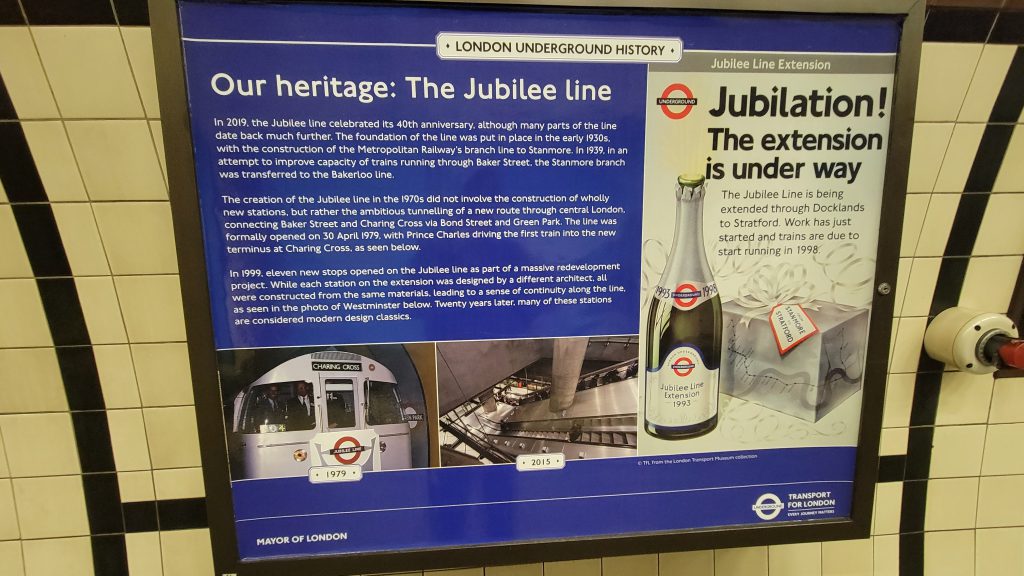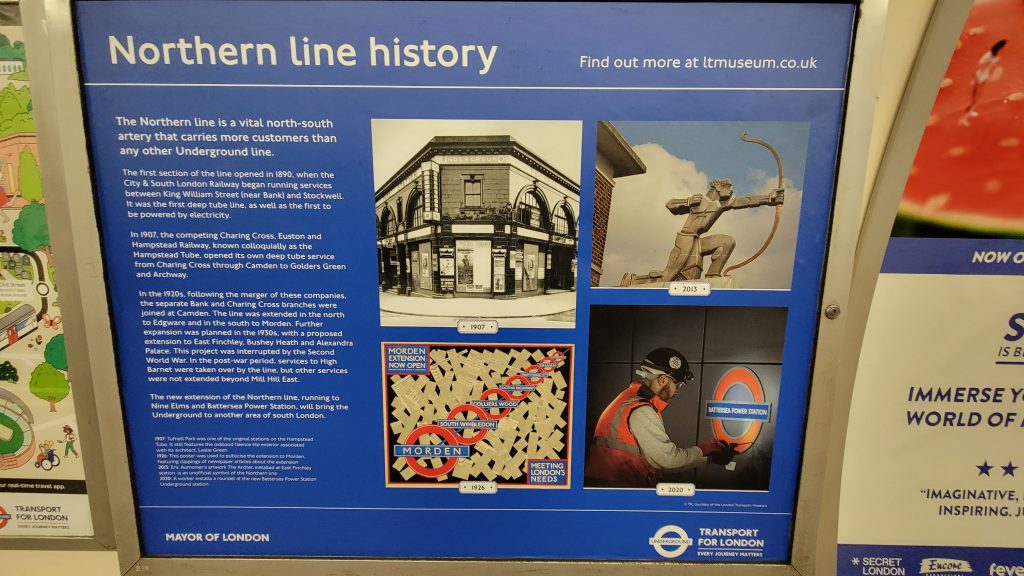One of the first things I noticed when I visited London was the extensive railroad system – one of the most well-known in the entire world. Nicknamed The Tube, the London Underground system was created in the 19th century. Most stations from this era, and even modern ones, have plaques briefly describing the station’s history.
My first run-in with The Tube was when I first got to London to head from Heathrow Airport into the city on the Piccadilly line. This line uses older trains from 1973, although they look refreshed inside.
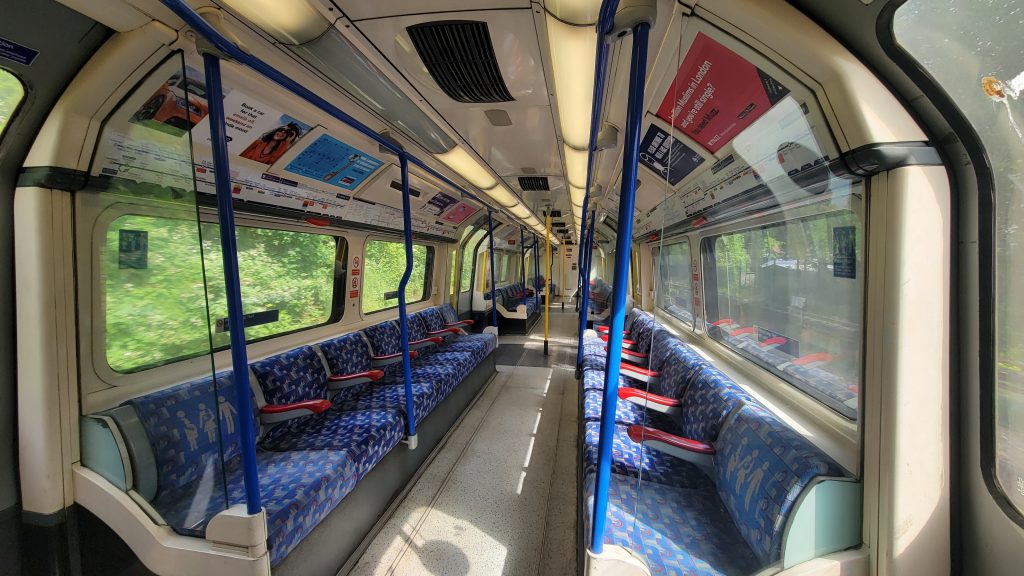
Coming from Boston, it seemed weird to be able to get on a train bound for the city directly from the airport. I was also surprised at how much time it took to wait for the next train after I missed the first one. The second train came in only 3 minutes after the first one left.
The system is most notable for its small “tube”-shaped tunnels, hence the nickname The Tube. It is evidenced by the curved roof of the trains so that it can fit into the tunnels.
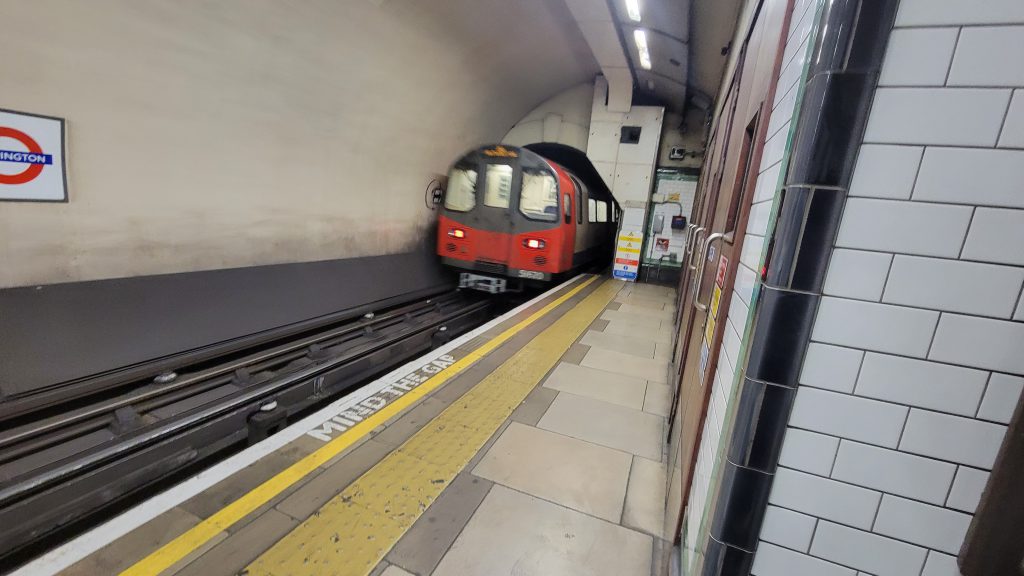
Station architecture also kept up with the times, with more modern-looking stations, such as at Canary Wharf (opened 1998) and Battersea Power Station (opened 2021).
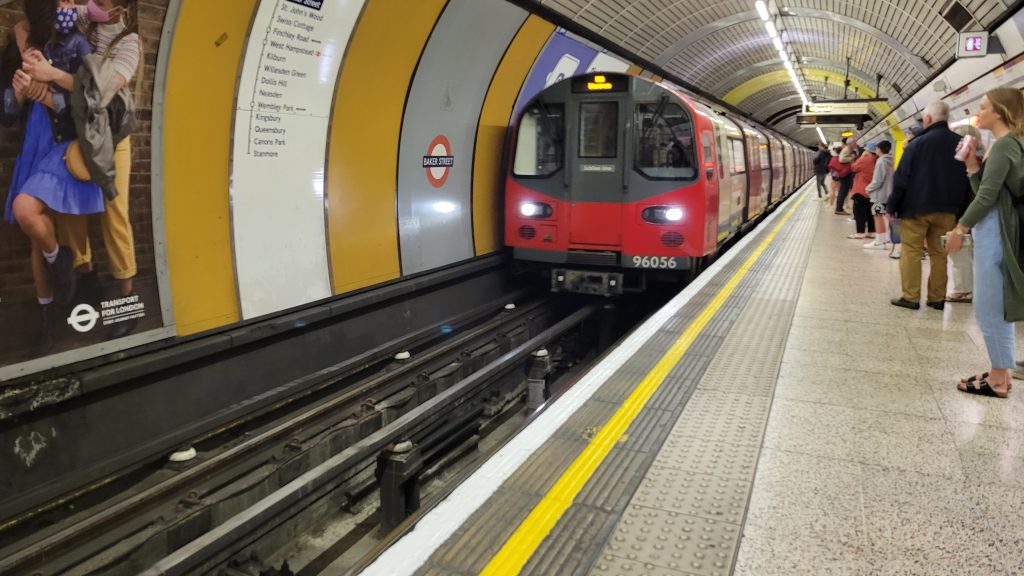

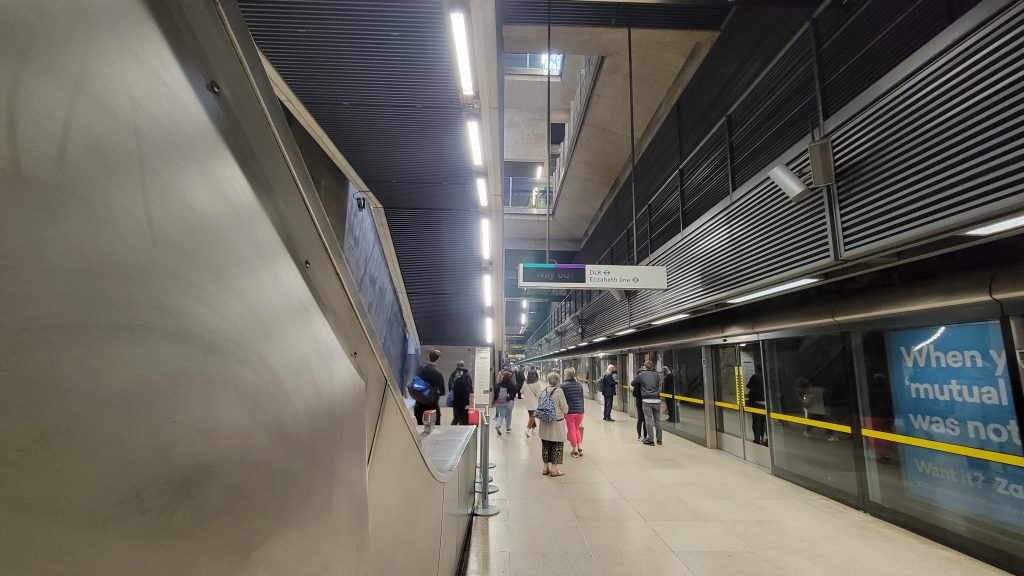
The Tube has also taken steps to improve its technology. In 1968, the Victoria line opened, and debuted a new technology that allowed trains to drive themselves. It eliminated most of the driver’s functions; however, they were still present to start the train by pushing two buttons, operate doors, and to look out for obstacles on the tracks. This eventually enabled newer trains to operate with 90 second intervals (https://www.ltmuseum.co.uk/collections/stories/transport/victoria-line).

Overall, I found The Tube to be an interesting system. It has historical charm while keeping up with the times. I highly recommend it as a way to get across London in a breeze.

